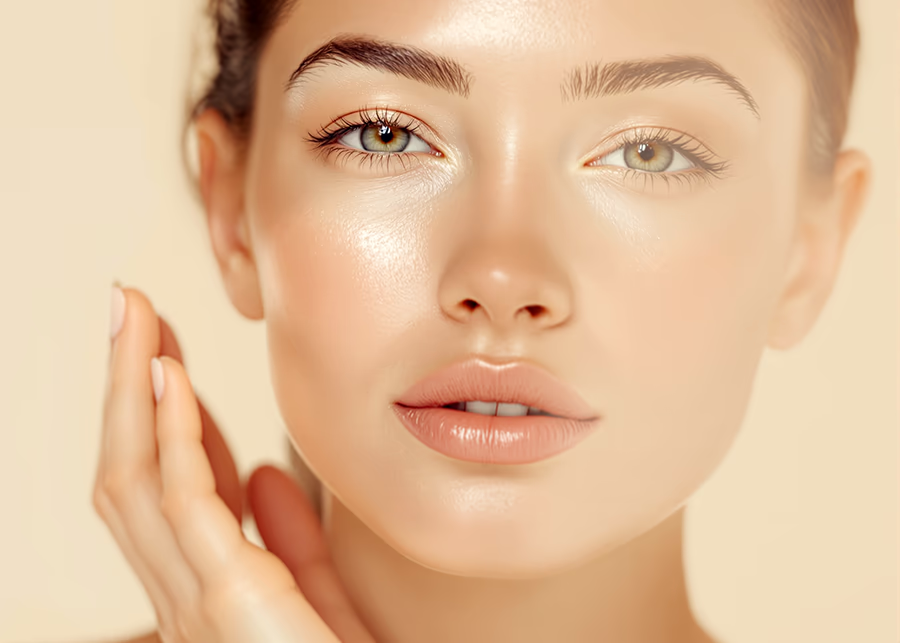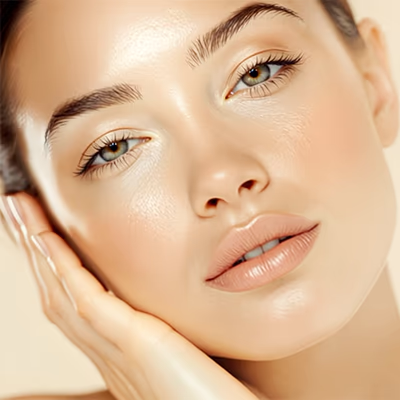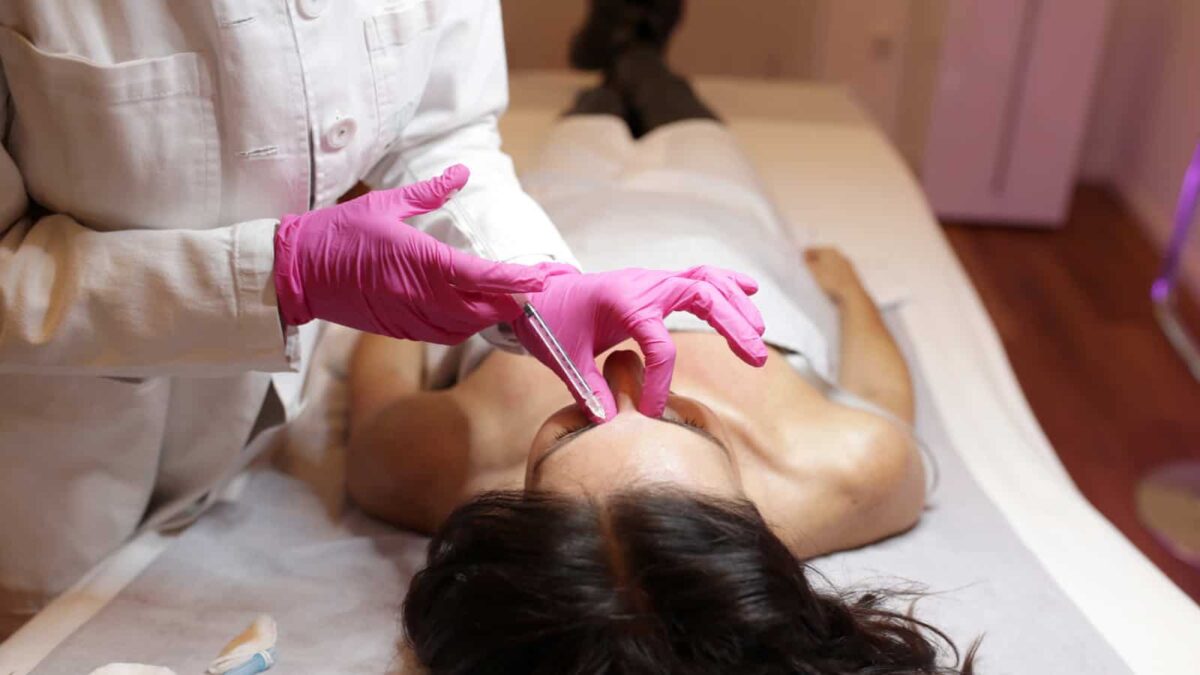Micro-Botox Munich – Refine Skin Texture for a Smooth, Even Complexion

Micro Botox at a Glance
- During a Micro-Botox treatment, a highly diluted form of Botulinum toxin A is injected very superficially into the skin using ultra-fine needles. The focus is on oily or large-pored areas, helping to refine skin texture and create a more even complexion.
- Because Botox is gradually metabolized by the body, the effect is temporary, typically lasting 4–6 months.
- Topical numbing is not strictly necessary but often recommended, as the numerous microinjections can cause mild discomfort.
- Common side effects include slight redness, swelling, or small bruises, which usually subside quickly. Rarely, allergic reactions may occur.
- No downtime is usually required.
- Including the numbing time, the initial session takes about 60–90 minutes, while follow-up treatments typically last 30–60 minutes.

What Is Micro-Botox?
Micro-Botox differs from classic Botox mainly in application. The active ingredient is identical to traditional Botox, but the technique is not. Instead of injecting precise amounts into specific muscles, Micro-Botox is distributed superficially and evenly across the skin.
Broad, Even Injections Instead of Targeted Points
The diluted Botox is injected in tiny amounts over many small points across the treatment area—a technique often described as creating “micro-wheals.” From one standard Botox vial, which would normally fill a 1 ml syringe for classic injections, 3–4 syringes are prepared for Micro-Botox. These are injected in a 1 × 1 cm grid pattern across the skin.
Micro-Botox, Skin Botox, or Baby Botox?
Because of its high dilution, Micro-Botox is designed only to soften fine lines and refine texture, not to erase deep wrinkles. The small toxin dose affects only the uppermost muscle fibers near the skin surface, without paralyzing the deeper muscle. As a result, the smoothing effect is subtle but visible—especially on early or mild lines.
One of its key advantages: facial expression remains completely natural. For patients new to Botox or concerned about a “frozen” look, Micro-Botox offers a gentle introduction—often called “Baby Botox” or “Botox Light.” However, it is not sufficient for treating deeply etched wrinkles.
What About “Mesobotox”?
In Germany, the term Mesobotox is sometimes used, but it’s misleading. Although the names sound similar, Micro-Botox is not a form of mesotherapy. It doesn’t follow mesotherapeutic protocols and doesn’t aim for the same biological effects.
Video: Microbotox + Microneedling
Treatment Process
- Consultation and Skin Assessment: A detailed discussion and analysis of the skin condition help determine whether Micro-Botox is the right option and define the optimal dilution and treatment areas.
- Preparation: The skin is thoroughly cleansed and disinfected. A topical numbing cream may be applied for 20–30 minutes to minimize discomfort during the procedure.
- Injection or Application: The diluted Botox is either injected into the skin using ultra-fine needles in a 1×1 cm grid or, when combined with microneedling, applied topically to penetrate through the microchannels.
- Aftercare: Mild redness or pinpoint marks may appear for a few hours. Makeup and skincare can typically be resumed the next day.
- Results: Skin texture gradually improves over several days, with optimal refinement visible after about 1–2 weeks. The effect usually lasts 4–6 months.
Risks and Possible Side Effects
Since Micro-Botox also uses Botulinum toxin A, the same general precautions and contraindications apply as with any Botox treatment. However, because the product is more diluted and injected very superficially, the risk of serious side effects is low.
Typical, mild reactions immediately after treatment include redness, slight swelling, or small wheals at the injection sites. These usually subside within a short time. Small bruises may occasionally occur but fade after a few days.
Due to the higher dilution, a small amount of the toxin may diffuse into deeper muscle layers, which can lead to minor, temporary facial asymmetry—for example, a smile that feels slightly restrained. Such effects are unintended but harmless and typically resolve within a few weeks.
Severe side effects such as infection, allergic reaction, or prolonged muscle weakness are theoretically possible with any injectable treatment but remain extremely rare.
Cost of Micro-Botox in Munich
The following Micro-Botox prices are indicative. Actual treatment costs are billed individually according to the German Medical Fee Schedule (GOÄ) and may therefore differ from the listed estimates.
Please note that health insurance will only cover Botox treatments deemed medically necessary. Since aesthetic Botox procedures are considered elective, they are typically not reimbursed, and patients should expect to cover the cost themselves.
Scroll
| Micro-Botox treatment | Price (indicative, incl. VAT) |
|---|---|
| Micro-Botox (injection) | from 360€ |
| Micro-Botox (needling | from 490€ |
| Consultation | 75€ |
Frequently Asked Questions
Absolute contraindications for Micro-Botox include neuromuscular disorders such as myasthenia gravis or Lambert–Eaton syndrome. The treatment is also not suitable for patients with difficulty swallowing (dysphagia) or chronic respiratory issues. In addition, allergies to any component of the product, as well as pregnancy and breastfeeding, are clear exclusion criteria.
Micro-Botox can help reduce sebum production, which may support acne management in select cases. However, it should not be used on actively inflamed acne. If you are considering Micro-Botox as part of acne treatment, consult your dermatologist first to ensure the skin is stable and suitable for the procedure.n.
Rosacea is a chronic skin condition characterized by redness, erythema, and facial flushing. For years, reports have suggested that Botox might help reduce Rosacea symptoms, though these were based mainly on isolated case observations. More recent clinical studies now indicate that Botox may indeed offer promising results. It has been shown to reduce flushing and gustatory sweating associated with Frey’s syndrome, often with effects lasting six months or longer.
Why Choose Dr. Strobl for Micro-Botox in Munich?

- Extensive experience from numerous successful Botox treatments for skin texture improvement in Munich
- Comprehensive medical expertise with specialization in skin refinement therapies and the subtle smoothing of fine lines
- All Micro-Botox treatments are performed personally by Dr. Eva Maria Strobl
- Ongoing advanced training in aesthetic injection techniques with Botulinum toxin
- Use of proven, evidence-based methods to ensure precise and safe results
- Focus on natural skin smoothing without affecting facial expression
- Conveniently located Munich practice, easily accessible by public transport, taxi, or car
- Transparent pricing and honest consultation regarding costs and treatment alternatives
- Personal aftercare and direct accessibility via phone, email, or WhatsApp
- High patient satisfaction with Botox-based treatments, confirmed by numerous positive reviews on Google, ProvenExpert, and Jameda

About the Author:
Dr. med. univ. Eva Maria Strobl is the owner of LIPS and SKIN Aesthetic Medicine practice in Munich. She is a trained specialist in general medicine (MedUni Vienna) and has over 10 years of specialization in non-surgical aesthetic procedures. Dr. Strobl is a member of the German Society for Aesthetic Botulinum Therapy e.V. (DGBT), the German Society of Anti-Aging Medicine e.V. (GSAAM) and of Network Global Health. She publishes regularly on her blog and on DocCheck.

